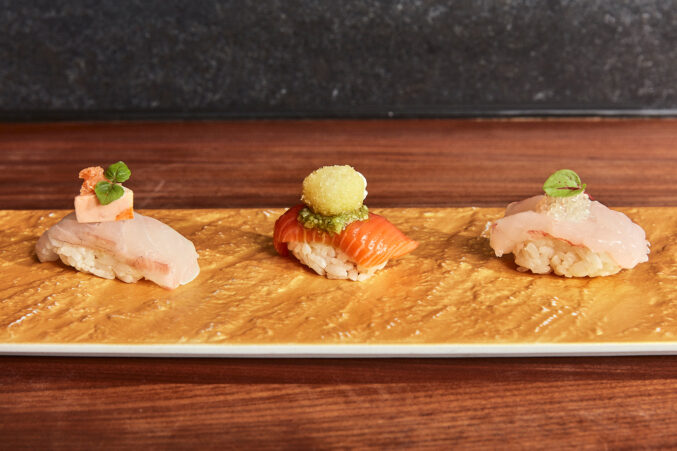 |
| illustration by Jack Gallagher |
| Ask Mr. Brooks Our resident know-it-all settles your most puzzling plant problems. |
Q: I recently installed flagstone stepping stones between my house and my fence. The area gets almost no direct sunlight and little foot traffic but is watered regularly. I’d like to grow moss between the stones. How do I start?
Grassless in Greenland Hills, Dallas
Mr. Brooks: I hate to tell you this, but moss isn’t a grass, and it won’t grow well in these conditions. Still, there are plenty of attractive options. I don’t know how short you want the growth to be, but I’d start by suggesting mondo grass or liriope. Sometimes referred to as monkey grass, they both create an interesting, textured look (as long as people don’t have to hop over it). They also both do well in the shade and make good, sturdy borders. The Kyoto dwarf variety of mondo grass grows only 4 inches off the ground, if you want something shorter. Several varieties grow more than 1 foot tall and will drape over your flagstone, which is an attractive look—says me. I prefer the liriope, which produces small stalks of tiny purple flowers, followed by black berries.
But why not be a bit more daring, take some chances? Try growing vinca, also known as periwinkle. This creeping ground cover is evergreen, with lance-shaped, dark-green leaves. Even better, it has pale purple flowers from spring to autumn (some varieties offer white or pink flowers). It loves shade and can stand up to the heat if given plenty of water. All of these plants can invade beyond their boundaries, so keep their growth in check, unless you want a yard full of monkey grass or ground-clinging vines—neither of which make good croquet fields, if that’s your thing.
Q: I have a raised brick flowerbed that comes off the outside wall of my house. It gets plenty of sun and heat, but I’d like to see something evergreen growing there. I don’t want the standard azaleas or boring boxwoods. What would you grow?
Eric Thompson, Dallas
Mr. Brooks: Ah, yes, the raised flowerbed coming off the house. Let me guess: You live in a 1950s ranch. Okay, where were we? Raised planter, evergreen, no boxwoods. If you’re looking for an attractive plant that’s easy to grow, you really can’t go wrong with Indian hawthorn. This hardy evergreen shrub can take the Texas heat, and its foliage, while not breathtaking, is interesting. Even better, its delicate white (or pink) flowers explode in color in the spring. Also, look into the many varieties of sage, especially Texas sage. Most offer unique foliage, long bloom times, and interesting growth shapes. Best of all, most varieties can take the Texas heat and then some, requiring far less water than other plants. They’ll save the community water and you some money.
Q: I want a hibiscus that I can plant in my garden, but I can’t tell the difference between the hardy and tropical varieties. How will I know I’m buying the right one?
Julie Nelson, Dallas
 |
| photography by Getty |
Mr. Brooks: Oh, the sweet siren song of the hibiscus. How many of us have fallen in love with her delicate blooms, only to have her leave us for good at the first sign of frost?
Here’s the real problem, Julie: The ever-expanding number of both the hardy (meaning it will make it through our winters) and tropical (meaning it will die if you don’t move it indoors for the cold months) types of hibiscus have made it harder to tell them apart, and many nurseries (the big chains being the worst offenders) just lump them together, indifferent to which one you end up with. But, if you’ve ever tried to plant a tropical hibiscus in Dallas, you know what happens the following spring—absolutely nothing. The plant is dead.
What to do? If you don’t know the exact variety of hardy hibiscus to ask for, you can do a little sleuthing to tell them apart from their tropical brethren. A tropical hibiscus has dark, glossy leaves, while a hardy hibiscus has lighter, flat leaves. Most, but not all, varieties of hardy hibiscuses have red, white, or pink blooms that are much larger than the tropical varieties. Look for those clues when shopping.
One note of caution: Hardy hibiscus die back completely in the winter, just like any other perennial, and they sometimes are the last plants in the garden to reemerge. Be patient with yours before cursing and grabbing the shovel—she may just be shy.
 |
| photography by Getty |
TIP OF THE MONTH
Don’t put that soaker hose away. Just because the brutal heat of summer is over, you still need to soak the ground around your foundation. Keep the soil around your house as stable as possible by keeping consistent moisture levels all year round. In the summer, soak the foundation several times a week. In the fall and winter, one or two times a week will do. Just don’t stop.
Having a domestic dispute with your garden? Don’t know where to turn? Just ask Mr. Brooks—[email protected].






